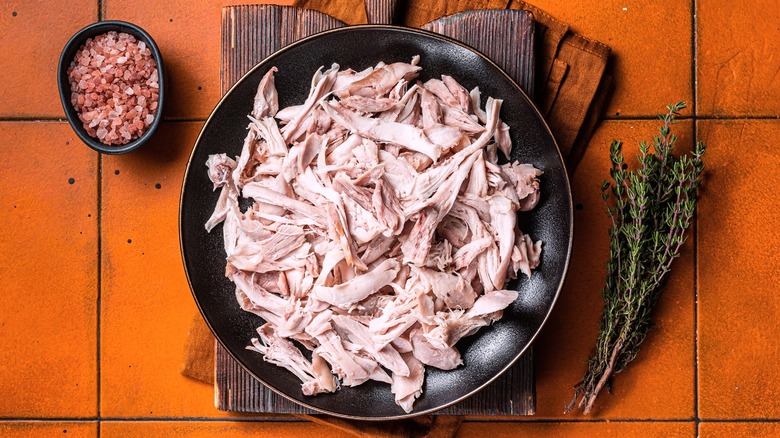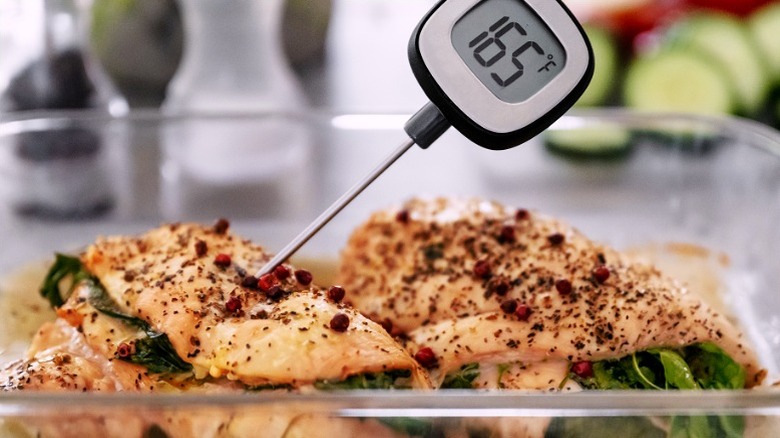Is It Safe To Eat Pink Chicken? The Answer Is More Complicated Than You Think
A general rule of thumb many people follow when cooking chicken is to make sure the meat turns from pink to white, but fully-cooked poultry can be white, tan, yellow, or pinkbecause of genetic and lifestyle factors in the livestock. Before you overheat or toss any pink canned or frozen chicken, you should know the science behind why poultry develops different colors.
Yellow chicken meat may occur when the birds have a carotenoid-dense diet, and the Silkie chicken breed can have dark blue or black meat. Myoglobin and traces of hemoglobin are the proteins responsible for a chicken's pinkness. The more myoglobins there are, the pinker the meat may be after cooking, and older chickens gain myoglobins with age. Young chickens' more-permeable bones and skin can also see bone marrow pigments transfer to the tissue, causing pinkness after cooking. So yes, cooked chicken can have many natural hues, but appearance alone can't indicate doneness.
Color doesn't equate to doneness in poultry
Whatever color your chicken comes out to be, you must make sure it's fully cooked — meaning you've applied enough heat to denature the meat and kill harmful bacteria. Chicken is safe to consume once it reaches an internal temperature of 165 degrees Fahrenheit, and temperature is the only reliable way to check for doneness in this case. Color can be deceptive, and what looks done to one person might look undone to another. Always insert a meat thermometer into the thickest part of the meat to get an accurate temperature read.
The presence of nitrates and nitrite preservatives, the way oven gasses interact with hemoglobin, and grilling or smoking a chicken can all lead it to be pinker. Pink meat isn't always an issue for concern, but raw meat is. The CDC states that ingesting raw or spoiled meat can lead to gastrointestinal illnesses, and that roughly 1 million people get sick from contaminated poultry every year. The only time to judge poultry by its color is if there's mold or if its natural color changes to green or gray, which can indicate spoilage. Otherwise, all you need to do is make sure you're heating your chicken all the way through.

